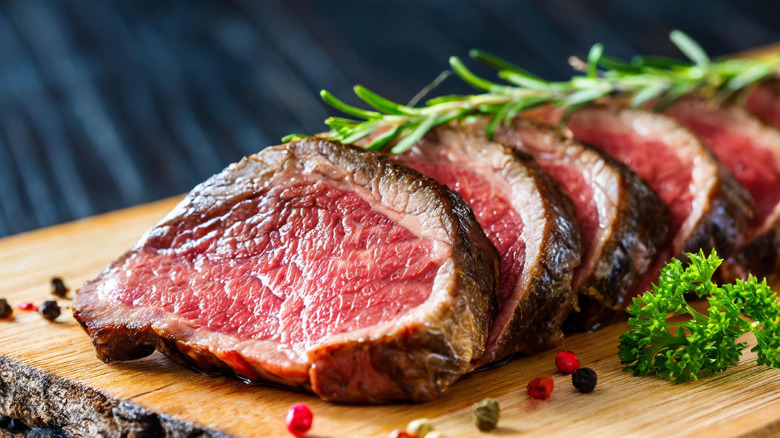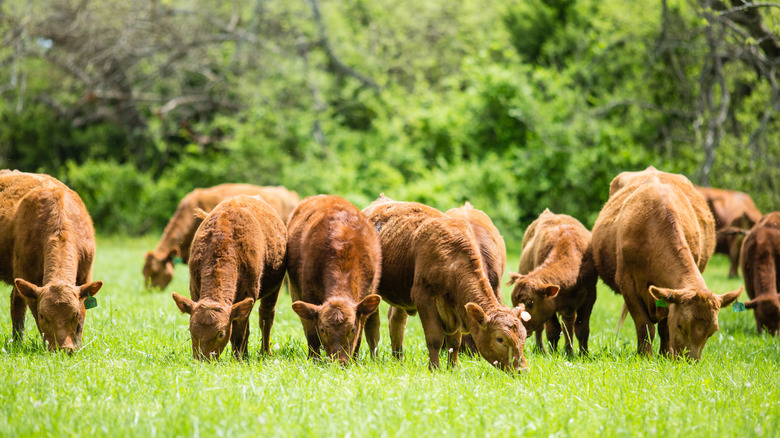Why Does Grass-Fed Beef Actually Taste Different?
People commonly choose to eat grass-fed beef because they believe it's a healthier option than grain-fed beef, and many like the idea that it's less cruel to let cattle live out their lives grazing outdoors. The meat does in fact have less fat than standard beef with fewer calories, and has more of a variety of beneficial fatty acids including omega-3. But it just takes a couple of bites to realize grass-fed meat tastes different, with a distinct flavor and texture.
Conventional beef cattle subsist on their mothers' milk after they're born and then graze for a few months. They are moved to feedlots at around 10 months for fast growth for some three to six months before they're slaughtered, where they're given grains to eat, typically corn and soy. This fattening up process produces marbling in the beef, lines, and flecks of fat that give it flavor, richness, juiciness, and tenderness. The U.S. Department of Agriculture rates beef as prime, the highest quality, based on this marbling. Corn-fed beef also has a mild sweetness from the grain.
Grass-fed cattle instead spend their entire lives grazing in pastures. Because they haven't been plumped up with fat from grain and have space to roam and use their muscles, unlike in feedlots, the beef's flavor is slightly stronger and earthier with a wilder, gamey taste, and doesn't have sweetness from corn. The meat is leaner without as much marbling, though the fat that is there is considered more flavorful by some. Still, due to grass-fed beef having less fat overall, it can be less juicy and succulent with a tougher, firmer texture.
How to cook grass fed beef
Because grass-fed beef is different from regular beef, it can't be prepared exactly the same way. It will cook 30% faster since it has less fat and can quickly become dry, so steaks will be best rare to medium-rare. Pull it off the heat 10 degrees early since it will continue to cook a little more, then let it rest for a few minutes to retain juices, Anthony Bourdain's most crucial step for a perfect steak.
Sear the beef first when grilling, then lower the heat to help the meat taste better and stay juicy. You can add moisture, richness, and flavor to the lean meat by coating it with olive oil or butter before cooking, or basting it with butter while it's on the heat. Or try dropping a pat of flavored butter like garlic and herb on top after it's finished. Add moisture to ground beef with a grated vegetable like onion, mushrooms, peppers, or celery, or a spoonful of mayonnaise.
The chewier beef benefits from being tenderized, which you can do by marinating it. The acid in marinades like wine (here's how to make a quick marinade with leftover wine) or vinegar to soften the meat. Seasonings in the liquid mix add more flavor, and garlic, scallions, rosemary, paprika, chili powder, Worcestershire sauce, and hot sauce are just some that would work well with the meat. Another option is to give the beef a few whacks with a meat pounder — spice it up by patting on a rub first.


